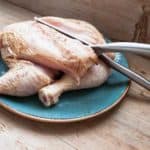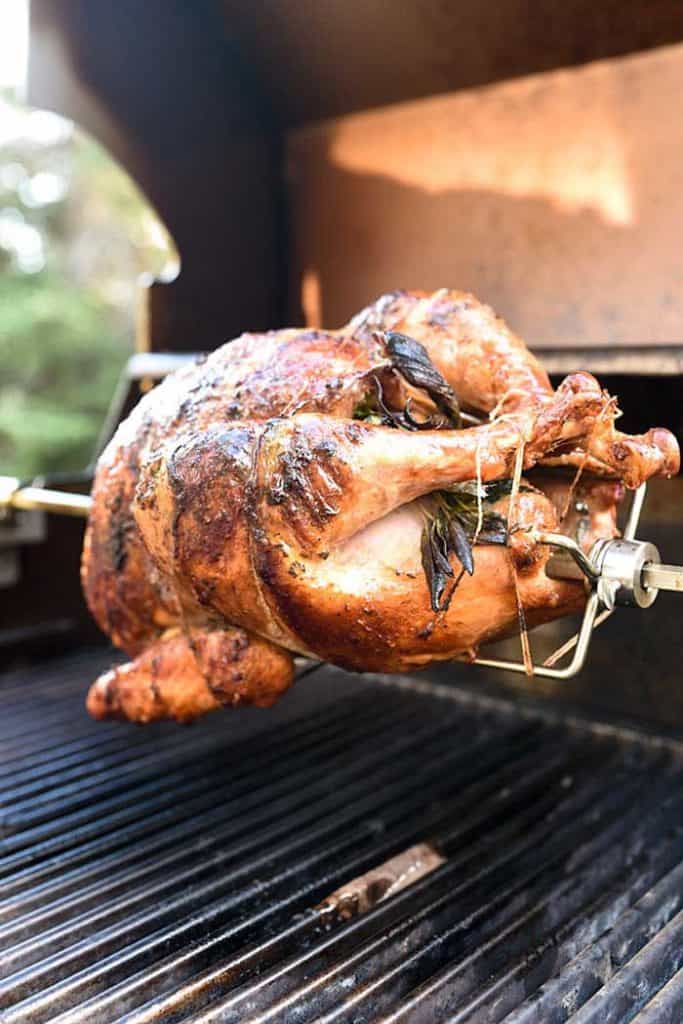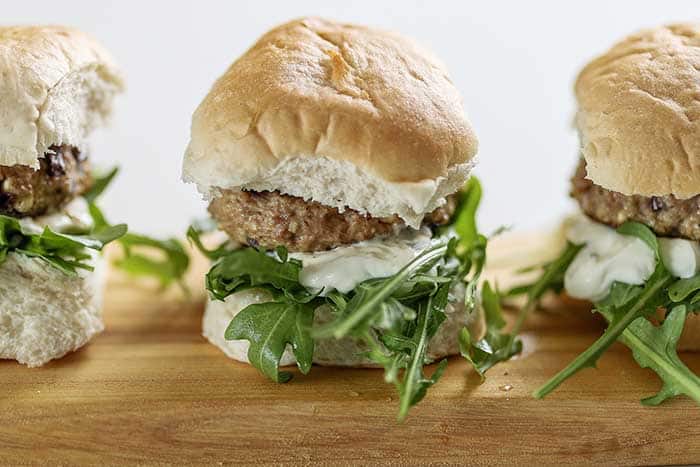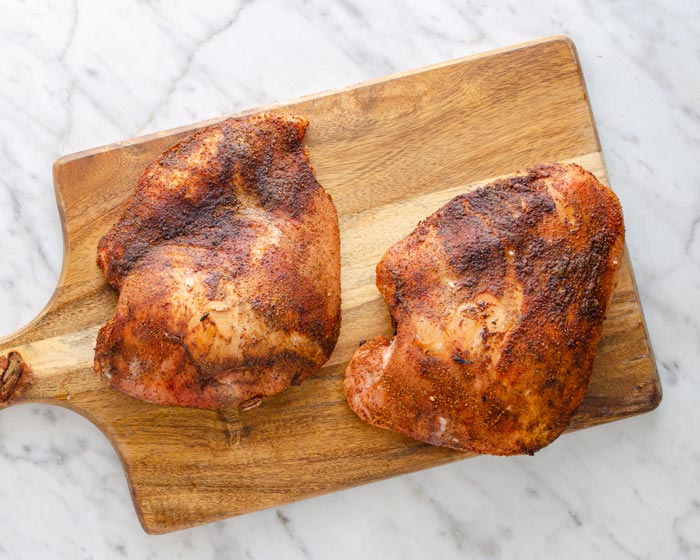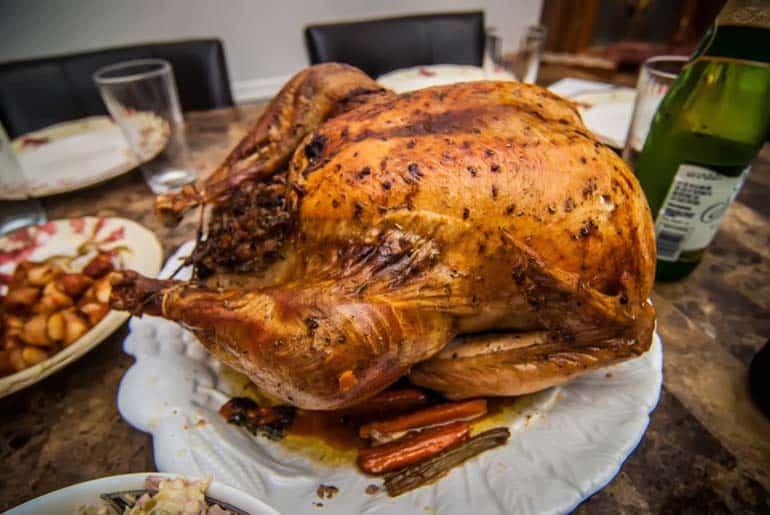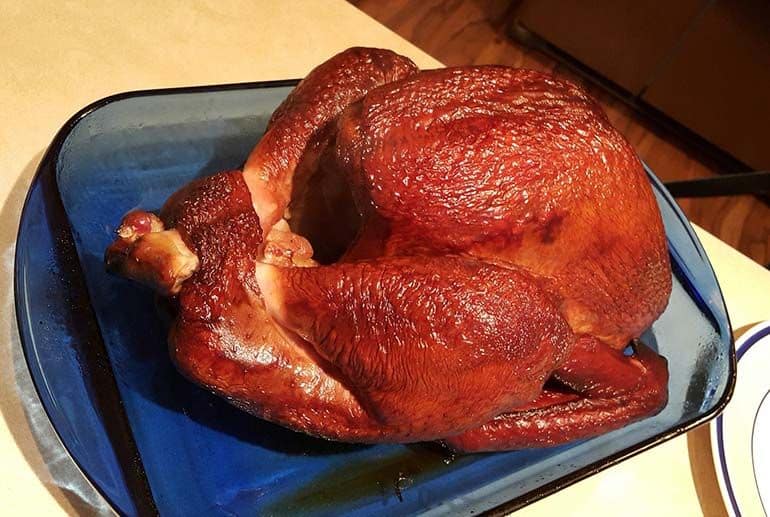Ensure tasty, juicy barbecue turkey every time with our guide to the best binders for smoked turkey. From types of binders to application tips, discover everything you need to know to elevate your BBQ smoked turkey today.
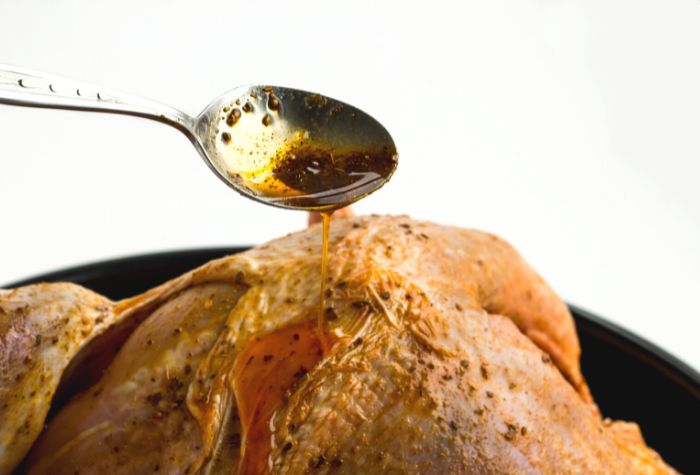
When it comes to barbecue turkey, you can take a few preparatory steps to ensure that your smoked turkey emerges from the barbecue with a crispy golden skin infused with flavor. One of these is applying a binder.
Simply put, a binder—also known as a slather or rub glue—binds your seasoning to the turkey, ensuring that the herbs or spices you apply do what you want them to do instead of falling off as soon as you pop your bird in the smoker. Sounds simple, right? That’s because it is.
The good news is that finding the right binder for your smoked turkey is easier than you think. We’ve rounded up a few of our favorite smoked turkey binders.
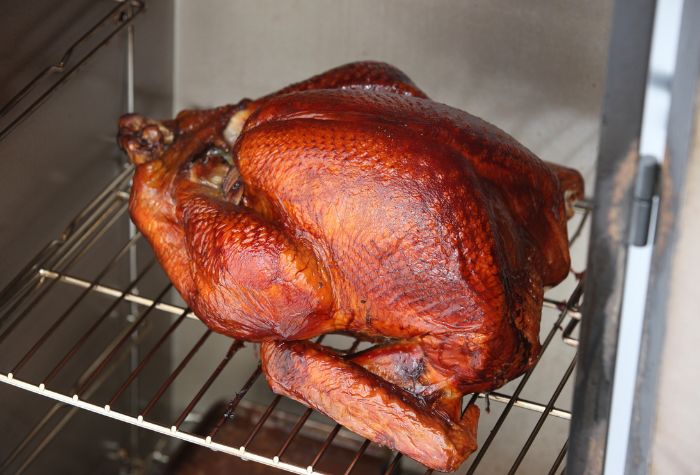
Why Use a Binder for Barbecue Smoked Turkey?
While the obvious function of a binder is to ensure that the rub stays on the turkey, the binder also serves another important purpose. The binder creates a barrier between the meat and the smoke, which will help prevent the meat from drying out. A binder is particularly important if you plan on smoking your meat at a higher temperature; in this case, the binder helps the skin to crisp up instead of burning.
When you use a binder on fattier cuts such as spare ribs, beef brisket, or pork butt, you tend to slather it on because you want the binder-and-rub combination to form a crusty, flavorful bark on the exterior of the meat. In this case, the binder is often mustard or barbecue sauce. For smoked turkey, however, this is not what you are going for. Here, you want the binder to deliver a crispy, golden skin while subtly enhancing the flavor of the turkey.
How to Choose the Right Binder for Your Smoked Turkey
While your choice of binder largely comes down to personal taste, there are a few external factors that might influence your decision. These include the type of smoker you are using, the temperature at which you intend to smoke your turkey, and the flavor profile of your rub.
The Type of Smoker
It is useful to consider the type of smoker you are using, as it affects the flavor. If, for example, you are using a charcoal smoker, it might be best to use a binder with a strong flavor, such as barbecue sauce or Worcestershire sauce. With an electric smoker, on the other hand, you can get away with a milder binder such as butter or mayonnaise.
The Smoke Point
The ‘smoke point’ refers to the temperature at which an oil begins to break down and produce smoke. When an oil—or, in this case, your binder—reaches its smoke point, it releases harmful free radicals and can also become bitter-tasting. For this reason, it is important to ensure that the binder you choose has a smoke point greater than the temperature at which you plan to smoke your turkey.
The Rub
While some binders, such as butter, have a mild flavor and can be used with most rubs, it is always a good idea to consider whether or not the binder you use will complement and enhance the flavor of your rub. If, for example, your rub included curry spices, it would make more sense to use coconut oil as a binder than mustard. Similarly, if you want to use aromatic herbs as a rub, butter would work better as a binder than barbecue sauce.
Tips for Applying a Binder
- Apply the binder in a thin, even layer to ensure the turkey is uniformly moist and flavorful.
- Don’t overapply the binder. If you are using a strongly flavored binder such as mustard or barbecue sauce, a thick layer may be too overpowering. If you apply too much of an oil-based binder, you also run the risk of having some of it drip off and cause flare-ups that could burn the turkey.
- After applying the binder, let the turkey sit for 30 minutes before applying the dry rub. This will give the binder time to penetrate the meat and start working its magic before you smoke it.
The Best Binders for Smoked Turkey
Butter
This simple ingredient can elevate your dish from “not bad” to “mouth-wateringly delicious.” Not only does butter enhance the natural flavor of the turkey, but it also gives you that crispy, golden skin. Pair it with a rub of kosher salt and aromatic herbs for a touch of freshness. For best results, melt the butter and apply it evenly over the turkey with a brush. Remember that butter has a relatively low smoke point—350 degrees Fahrenheit—so you’re going to want to opt for a low, slow smoke.
Oil
Oil is perhaps the most versatile option on this list. It tends to have a higher smoke point than butter—particularly if you opt for a light neutral oil such as grapeseed oil (420 degrees Fahrenheit) or canola oil (400 degrees Fahrenheit)—so it can withstand higher temperatures. If you can get your hands on a light oil spray, it makes for easy application, but otherwise, apply a thin layer with a brush. Oil can be paired with most rubs; just remember to ensure that the flavor profiles are complementary.
Mustard
While mustard is typically used as a binder on pork or brisket, it can also work well on turkey if you opt for a relatively mild mustard. The mustard adds both acidity and flavor, and is a great option if you are smoking turkey legs, as they contain darker meat and thicker skin. To ensure that the mustard isn’t too overpowering and that it doesn’t burn, apply a thin coat with a brush. We recommend pairing it with a garlic rub—simple, yet scrumptious.
Mayonnaise
You want a binder that has a great consistency (easy to spread and full of stickiness), is high in fat (to keep the meat moist), and has a relatively neutral flavor profile that won’t overshadow the flavors of the turkey. Mayonnaise ticks all the boxes. Try pairing it with a brown sugar rub for a touch of sweetness and enhanced depth of flavor.
Worcestershire Sauce
Looking to add depth and complexity to your turkey? Try using Worcestershire sauce as a binder. The sauce has a distinctive flavor that is both savory and sweet, with a hint of umami. Opt for a version with reduced salt; otherwise, you run the risk of drying out your turkey. The sauce is already packed full of flavor, so keep it simple by pairing it with a pepper rub.
Frequently Asked Questions
Are there any reasons you wouldn’t use a binder?
There are many advantages to using a binder, but, in the end, it comes down to personal choice. You may choose not to use a binder because you feel that you can better appreciate the natural flavor of the turkey without one. Adding a binder is also an additional step in the preparatory process, so you might decide to forgo the binder if you are pressed for time. Another reason you may skip the binder is that you are worried about it burning.
If you wet-brine the turkey, should you still use a binder?
Brining and binding are two entirely different processes that contribute to moisture retention. Wet brining is a process that allows the meat to absorb additional moisture and seasoning. However, if you smoke a brined turkey without adding a binder and rub, you might end up with charred or rubbery skin. Your best bet is to rinse the brine off your turkey, pat it dry, and then add a binder and seasoning rub. This way, you’ll have tender, flavorful meat, and a deliciously crispy skin.
What doesn’t work that well as a binder?
It is best to avoid using stock or broth as a binder because these are water-based and will not give you that crispy skin that fat-based binders deliver. You also want to avoid using binders that are overly sugary, as this can easily result in burnt or blackened skin.



